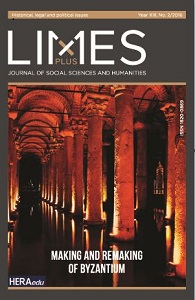
We kindly inform you that, as long as the subject affiliation of our 300.000+ articles is in progress, you might get unsufficient or no results on your third level or second level search. In this case, please broaden your search criteria.

Dr Yuriy Nikolaevic Bohan was founder of weaponology in the Belarusian historical science, he sucessufly researched in different aspects of military history, urban geography and material culture of XIVth–XVIth century Great Duchy of Lithuania. The sudden decease of this man of science is a big loss for belarussian historical science.
More...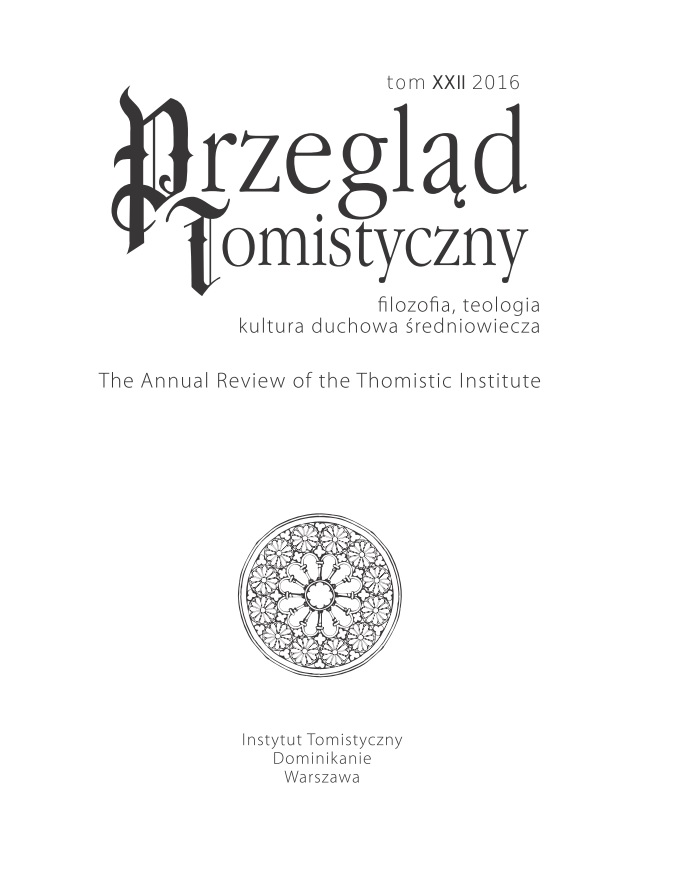
Rapid development caused by, among other things, the constitution of the University of Prague and the establishment of the local church province, occurred in the mid-fourteenth century in the Kingdom of Bohemia, the cradle of the so-called First Reformation (that is, Hussitism). The founding of the University, along with the activity of a widely-spread parish network, should have become the basis of the country’s religious and cultural life. However, the parish clergy was poorly formed. Frequent diocesan synods and, especially, synodal preaching became the main instruments for improving the formation of priests under the guidance of the Archbishop. Synodal sermons were designed to serve as a exemplars or patterns for what priests might preach in their own parishes. The ideas contained in these synodal sermons were thus copied repeatedly. They spread quickly to all parts of the Kingdom. From the 69 documented synods of Prague up to the beginning of the Hussite period, 24 sermons from the years 1365–1407 can be attributed to the synodal program. These were presented by 12 different preachers, always appointed by the Archbishop. A synodal sermon belongs to the “sermones ad clerum” genre, of course. We know the dates of each synod by the feats that occurred during it (for instance, the Feats of Saint Vitus or Saint Luke), and the themes of the sermons were inspired by the liturgical texts of those feasts. The article follows both the content and the formal development of all sermons researched, ranging from the academic or scholarly sort of sermon, in which abstractions such as Good and Bad are used, to more vivid and nearly poetic sermons that often make reference to the negative experience of listeners and refer disdainfully to contemporary “decadence”. This latter type of sermon was particularly prominent in the late 1380s and early 1390s. The oldest three sermons, from the 1360s, are unique because of their author, the reform preacher Jan Milíč of Kroměříž. He was atypical because he was not part of the academic community; the other preachers selected by the Archbishop were usually university professors. Most often, the preachers were theologians. In one case, a professor of canon law was invited to speak. A Dominican lecturer was given the pulpit once, too. Beginning in the 1380s, synodal sermons sometimes referred to important ecclesiastical controversies (like the one surrounding indulgences) or legal controversies (such as the debate about escheatage), but they still conveyed the basic moralist attitude inspired by the treatise De Vita et Honestate Clericorum. In the last few sermons authored by John Hus, Wycliffe’s thoughts are discernable. The development of synodal preaching was finished by an arenga, compiled for the Synod of 1413, which was summoned by the King. In the appendix of this article there is an index and overview of the synod terms connected with the sermons, including the number of known manuscripts, a list of sermons whose dates are unknown that are not covered in detail in this article, and references to other sources on the topic of synodal preaching in Prague.
More...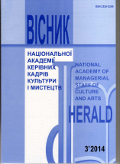
The period of the High Middle Ages was a basic in the process of European urbanization. During this time there was the formation of a new way of life in Europe and England. This way of life was most attractive. That is why the most people in the world now lives in cities. The British were the first urban nation.In medieval England we can investigate the characteristic features of everyday life of urban residents through original sources. Since the High Middle Ages until now remained only three anonymous works of urban literature of England of High Middle Ages written in Middle English language – "Dame Siriz", "Of the Fox and the Wolf" and "Land of Cockayne".The earliest among Middle English fabliau is "Land of Cockayne". It is conserved in a single copy, which is now found in the British Library (manuscript Harley 913, between 1250 and 1315). In the story we can separate four parts: comparison of Cockayne with the Christian Paradise; describing the country and the abbey there; the flights of monks and their shameful life; an instruction how to get to this "paradise".A very valuable resource, which is analyzed in this article, is "Dame Sirith". The manuscript of the fabliau is Digby 86 of the Bodleian library in Oxford (dates the second half of the thirteenth century). 450 lines of the poetic text narrating the adventures of Wilekin in attaining love to Margery, a wife of a merchant. This ability of Dame Siriz (neither fortune-teller, nor simply smart women) helps the hero.The fabliau "Of the Fox and the Wolf" was widely known in medieval England (written in second half of the thirteenth century). It was the English version of the story of Fox Renard. The manuscript of the humorous story is the same as the "Dame Siriz".Studying the Middle fabliaux of XIII century we discover a number of problems relating to the everyday life of townspeople of High Middle England.The features of the chronotope of everyday life of English cities during the period were accuracy and well-regulation of life. The locations of scenes in the middle English fabliaux are clear for audience, there are no necessary to characterize it. Detailing of the places leads to confusion in the "Land of Cockayne". Cities include the suburbs – the abode of monks, the outskirts of the forest, suburban roads, rivers and so on. There are no description of the walls of the city. The urban area is a part of the nature. Important elements of the space of the city was churches, cathedrals. It were described in fabliaux very vividly.In the vernacular fabliaux timeframes are conventional: "nizt and dai", "to nizt", "monizer", "monidai", "hit com to the time", "Zurstendai" and others. Calculating of the time was designated by a bell.The level of material culture of the town-livers of Medieval Albion very high. The house is very comfortable one. The daily life was concentrated around the house. That is why the subject of the fabliau focused around house too. Apartment divided into several areas – hall and rooms. Particular attention is paid to bed in the Middle English fabliaux. Obviously they covered by textiles, which also decorated the walls. This was a way for indicate a wealth of home owners, their status in society, as well as keeping a "space hygiene".A characteristic feature of the fabliaux is the lack or maximum brevity of descriptions of the characters, their clothes and so on. Obviously, the closings of the heroes are clear to the readers, listeners of viewers of fabliaux. There are the emphasis on key terms. The main features of the description of clothing in the "Land of Cockayne" are the absence of parasites; colors of clothing are clearly associated with a particular layer; luxurious textiles, silk. Also fabliaux provide materials about nudity. Apparently these indecencies are normal, natural for medieval morality. Although these erotic phenomena in medieval literature require further analysis. The feature of urban feasting of the High Middle Ages in England was the introduction of "fast food" into everyday life. The "Land of Cokayne" describes "of fleis, of fisse, and rich met, // þe likfullist þat man mei et" and "þe gees, i-rostid on þe splitte, Fleed to þat abbai, God hit wot, // And grediþ, Gees al hote, al hote!" In the system of feasting of the English bourgeoisie in the thirteenth century we view the social hierarchy. Not all products may be available equally to all people. That is why in utopia of Cockayne "man mai þer-of et inog // Al wiþ rizt and nogt wiþ wog…" Special interest medieval town-livers found in spices. And the city created the myth of "food paradise" Cokayne land, where "beþ .iiij. willis … of tereacle and halwei, of baum and ek piement".In general, the earliest examples of Middle English fabliaux offer us a vividly picture of the everyday life of medieval English towns during the High Middle Ages.
More...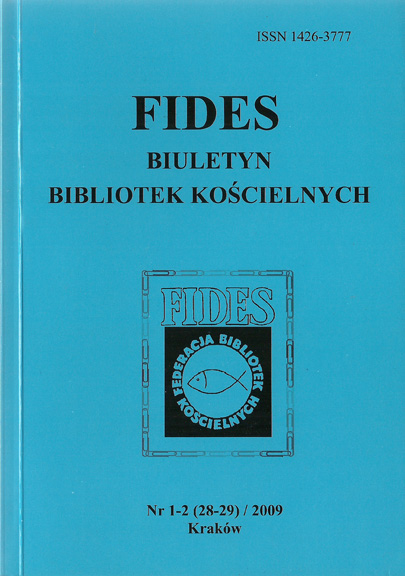
W marcu 2009 r. dzięki staraniom i pełnemu zaangażowaniu swoich sił i talentów ks. Rektora dr Tadeusza Kądziołki, Biblioteka Metropolitalnego Seminarium Duchownego w Lublinie podjęła prace w ramach projektu mającego na celu konserwację i ochronę zbiorów biblioteki. Prace te zostały zrealizowane przez konserwatorów państwa Jolantę i Ryszarda Orysiak oraz Ewę Jodłowską. Zadanie zostało dofinansowane przez Ministerstwo Kultury i Dziedzictwa Narodowego w ramach Programu Operacyjnego „Dziedzictwo Kulturowe”, priorytet 2 „Rozwój instytucji muzealnych”. Interesujące nas obiekty poddane konserwacji zwrócono w grudniu 2009.
More...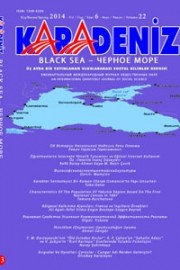
Historical and cultural relationship of the Kyrgyz and Oirat had taken shape until the Mongol onslaught. These relationships continued during the attack of the Naimans and later until Karakhita is attack. As a result; Kyrgyz state was divided into two as Yenisei Kyrgyz and Tengirtoo Kyrgyz. Additionally, Yenisei Kyrgyz and the Oirats, and then Zhungars (Oirat-Kalmyk) had politically and economically close relations. In 1399, Yenisei Kyrgyz founded a state with Oirats. It is known that the ruler Munke-Temir (GüylüchüKashka) was of Kyrgyz origin. This state is mentioned as da-dan (Tatar) in Chinese sources. It is also known that the later state of the Oirats, Zhungaria State (Züüngar), was a significant state with great impact in Central Asia. State-founders were from the aristocratic Choros clan. It is also investigated in the article how the rulers from this clan were in fluential in other states.
More...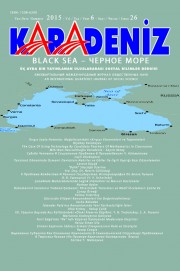
From the very beginnings of 14th century, the Ottomans gained knowledge and experience during the rule of Mediterranean and Black Sea region, providing them with great advantages in the later years as they took over the mariner practices from the western Anatolian seigniors. The empire, which gained the sea rule, did not only make regulations concerning the economic activity and transportation strategy on seas but also rivers and lakes all over the empire. Moreover, military practices were developed by navigation logistics on the lakes and rivers. Ottomans intended to resume the territories they lost and systematize not only the road traffic but also the potential benefit of sea routes by enacting marine law including the regulation of marine activities. This study aims to highlight what kind of efforts were spent by the Ottomans to revitalize the sea trade on the rivers and lakes in spite of the marine technology used by the big powers. Also, what kind of cautions were taken by the Ottomans to stop the danger of overflows appearing in spring and their solution of finding the ways of creating favorable conditions for agricultural activities making use of the rivers will be explored.
More...
The article studies the problem of the existence of the culture of Potestas among the Sakha in the pre-Russian period. The myth about Tygyn as a leader of the Sakha tribes has a wide historiography. Correlating the folklore materials with the written documents, one can trace the time and conditions of formation of the Sakha sovereign’s folklore type.
More...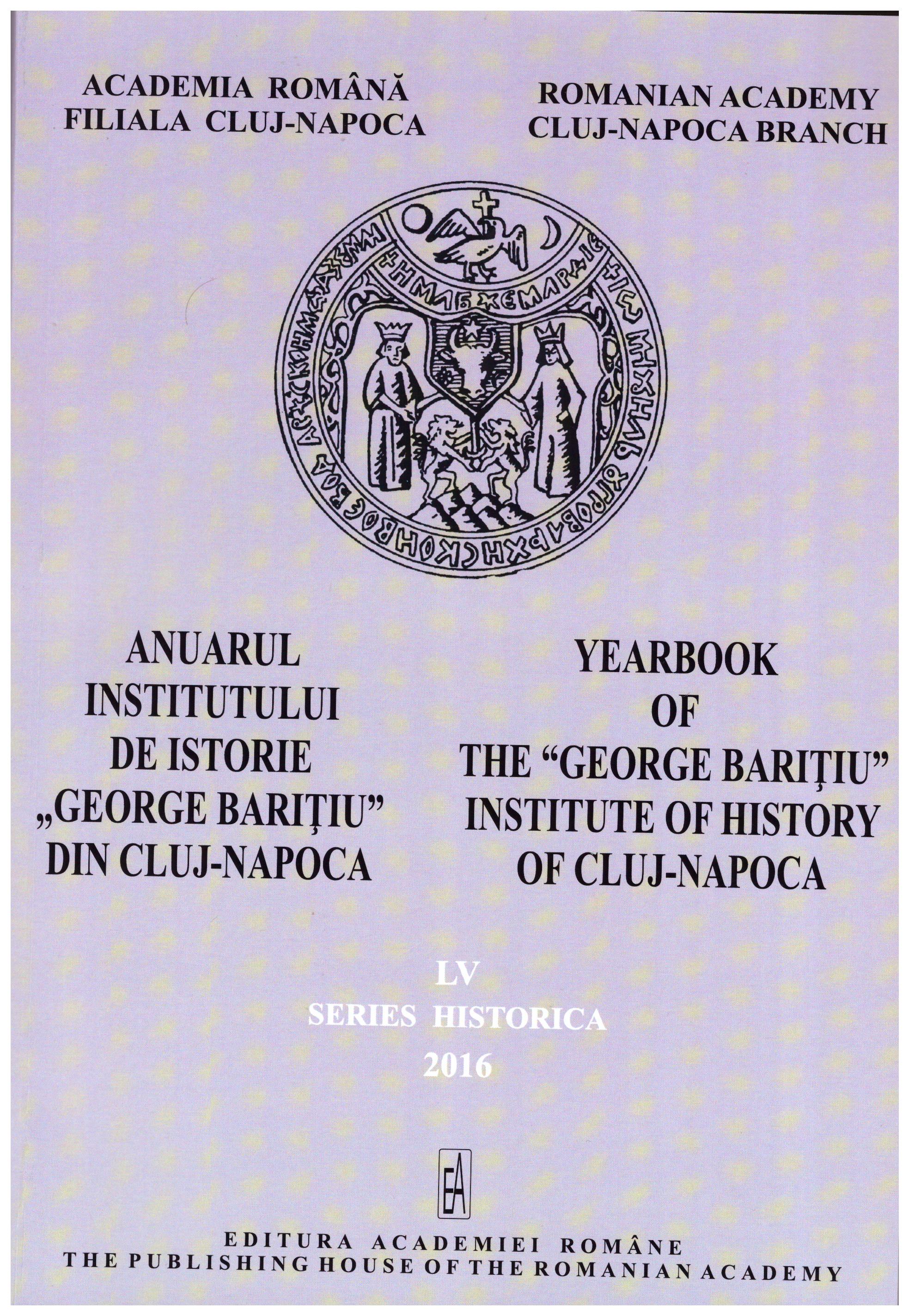
The study refers to the meteoric presence in medieval documents from Transylvania (1355) of an Armenian bishop named Martin of Tălmaciu, vicar of the archbishop of Esztergom. We think it is an interesting case for the implementation of the subordination's policy of the Armenian Rite by the figure of a vicar bishop or a diocesan vicar to the authority of the archbishop that oversees the ecclesiastical discipline in the territory of the provostship of Sibiu. In this business is involved also the cistercian abbey of Cârţa, that may have been implicated in the admission of the Armenians of Tălmaciu under the obedience of the Roman Church.
More...
Anthroponyms represent an important mirror for the historical situation of the Arad and Bihor counties during the late 12th century and also at the beginning of the following one. Typical of the situation previous to the anthroponymical uniformisation promoted by the Christian Church especially starting with the second half of the 13th century, the names of the period had in view „speak” about the ethnic groups who cohabited in this part of Europe and whose cultural traits gave rise to a unique medieval culture. The anthroponyms vary widely, from Latin, Hungarian and German to Greek, Jewish, Romanian or Cuman. All of these old names, not just the Christian ones, are also characterised by another important aspect: they have a meaning in their original language. Where I could, I established this sense, but in many causes I have failed. Hopefully, future research will solve these important issues.
More...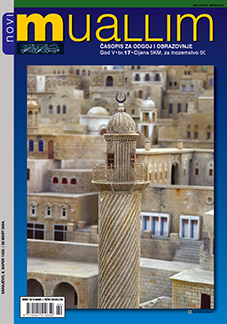
Aggression against Bosnia and Herzegovina, along with the genocide and other crimes against humanity committed in this country, greatly resemble the faith which befell Muslims of Andalusia, in the Muslim Spain. Marthiyya, a tragic poem of Abul Baqa Al Rundi laments over the loss of cities; it was made in 1267, in the aftermath of the loss of Sevilla which fell into the hands of Christians in 1248. Enclosed is the poem in its original Arabic version, as well as in Bosnian language.
More...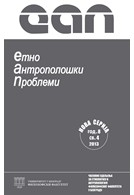
Within the discipline, the historical roots of ethnology and anthropology are most often traced through European antiquity, the enlightenment and the modern intellectual traditions of the West. Even though this view is somewhat justified (in that it follows a clear continuity in the development and scientification of the discipline in western universities), it, perhaps unintentionally, leaves out the intellectual efforts of Islamic thinkers and travelers, who had also, in their time, encountered various forms of "cultural otherness" and strived to represent and interpret them to their own readers. This paper focuses on Ibn Battuta’s decades of travel through Muslim lands – and beyond – and is envisioned as a theoretical experiment the purpose of which isilluminating the significance of Ibn Battuta’s writings, not only for the historical but also for the contemporary aspects of our discipline.It is a reflection on the ethnographic aspect of Ibn Battuta’s writings about the people and cultures which he encountered in his travels.
More...
In the mid-13th century, the Pope established the rule according to which all the newly named bishops and abbots had to pay during their investiture a certain tax, the so-called servitium commune, as well as five servitia minuta. Establishing the amount of the tax and care of its fulfillment was within the competency of the Apostolic Chamber. Its documentation points that the Kotor bishops Sergije II, a dominus B., electus Catharrensis, Toma of Ulcinj, Segije III, and Adam, who headed the Kotor Church between 1328 and 1352, were exempt from this tax due to poverty. This means that in this period the revenue of the Kotor Church did not exceed one hundred gold forints. From the end of the 14th century, after the establishment of Venetian sovereignty in Kotor (in 1420), bishops regularly paid to the Apostolic Chamber a tax of 33 and one third gold forints. In the beginning, they paid this tax in two installments, although they were sometimes late, or third parties offered guarantees for them. From the time of Marin Kontaren, bishops paid the money on the same day that they were elected. At the end of the 15th century, the Kotor Church revenue increased, as did the tax, to fifty gold forints. Despite the fact that in the first half and in mid-14th century Kotor had considerable material wealth, due to the privileged position it had in the Nemanjić state, and in the city itself great care was devoted to the appearance and decoration of the churches, this does not mean that the diocese was rich. The church administration did not care very much about the property or the income of individual churches, which was reflected onto the overall position of the bishopric treasury, and the Orthodox Serbian kings did not care too much about servicing the financial obligations that their subjects, Catholic prelates, had towards the Curia. After 1420, the Venetian authorities established firm control over the material conditions in the diocese, which resulted in the increased income of the Kotor treasury and regular payment of the servitium commune.
More...
According to the available sources, Great Duke of Bosnia Hrvoje Vukčić Hrvatinić initially came into possesion of Omiš by conquest sometime between 1399 and the spring of 1401, gained full control of it in 1404 after the deposal of King Ostoja and held it until his death, early in 1416. Most of the time he recognized supremacy of one of the two contending kings of Hungary – first of Ladislaus of Naples (1401-1408) and then of Sigismund of Luxemburg (1408- 1413), but he usually acted on his own. During the last three years of his life he defended the town as an independent lord. There is no proof that he acquired Omiš through his marriage with Jelena, the sister of the count Ivaniš II Nelipčić. The beginning of Hrvoje’s rule was marked by his efforts to organize a virtually independent territory consisting of the coast between the rivers of Cetina and Neretva (the area known as Omiš and Krajina) together with the islands of Brač, Hvar and Korčula, acting as the representative of the pretender Ladislaus of Naples. Following the attack of King Sigismund on Bosnia in 1408, Hrvoje changed sides and was confirmed in his possessions by the king, although his power was slightly diminished. Hrvoje’s territories were imperiled after he had fallen out with King Sigismund in the spring of 1413, following the charges of Duke’s cooperation with the Turks. As his only possession in Dalmatia remained the fortress of Omiš, it became the center of his activities for regaining the lost territories in the region. Many political players entered the fight for Dalmatia. The great interest in Omiš was primarily the consequence of the intention of involved political parties to unite, under their rule, the areas of Omiš, Krajina and the Islands, whereby they would gain an important strategic spot with a harbour and long coastline. The Kingdom of Hungary tried to reunite Dalmatia under its rule once again. The Republic of Venice strived to take over the territories it had bought for a great amount of money from Ladislaus of Naples. The coastal cities – Split, Trogir and Dubrovnik were endangered by the piracy of the citizens of Omiš and therefore their counterattack was a natural reaction. Croatian nobles in Dalmatia also tried to expand their power and authority to Omiš. After Hrvoje’s death and since none of the parties engaged in the struggle gained the upper hand, the circumstances and her ability made Hrvoje’s widow Jelena the lord of Omiš, whereas her act of giving it away to her brother, which silently ended the crisis, seems to have been arbitrary and not a result of some agreement of succession of Hrvoje’s lands and possesions. Hungary made no complaint, as Nelipičić was its loyal subject, but Bosnia and Venice soon after (in the early 1420’s) renewed their demands for Omiš.
More...
In 1382 monk Dorotej and his son Danilo, the founders of monastery Drenča, endowed their foundation with a market place and thirteen villages in the region of Braničevo. The location of nine of these villages can be identified (three are still extant), and two more villages can be approximately located. The market place Kula and five villages in the lower reaches of the Vitovnica river formed a spatially unified group, and the other villages which have been identified were not far from them. The estate lay along or between important communications in the Braničevo region, including a stretch of the main road to Constantinople. In about 1379 Prince Lazar issued a charter to monastery Ždrelo (Gornjak) whereby he endowed it with numerous estates in Braničevo. The charter was preserved in a poor late copy, probably from the eighteenth century, which was destroyed in 1942. It is possible that some portions of the text were interpolated into the charter when it was transcribed. These circumstances make it difficult to interpret the evidence it contains concerning the estates bestowed on the monastery. The monastic landed estate included six villages near the monastery in the valley of the river Mlava, five villages near or on the banks of the Danube, one in the area of Venčanica, two villages in the area of Zvižd, and three in the region of Homolje. In addition to that, the monastery was endowed with two fishing posts on the Danube near modern Donji Milanovac. Although distant from one another, each of these holdings was connected with the other estates and with the monastery by good communications. The paper suggests that a number of toponyms quoted in the charter do not stand for the names of villages, as it was previously supposed, but are microtoponyms used to define village boundaries. Both monasteries lost their property after the Ottoman conquest of Serbia in 1459. A number of their villages passed into the hands of Turkish feudal lords (spahies), and seven villages were abandoned.
More...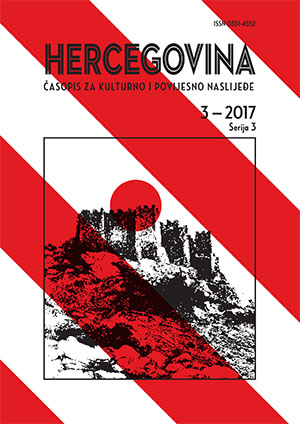
Based on the published and unpublished sources from the Dubrovnik archives, as well as earlier field research,the paper presents, apart from the references to the past,economic and cultural position of the Cernica residents during the reign of the noble Kosaca family.In the extant historiography medieval Cernica was recognized as one of the caravan stops on the 'Dubrovnik road'.Cernica was ruled by the squires from the house of Kosaca starting from the 70s of the 14th century until 1456, when it was incorporated into the Ottoman Empire. Duke Sandalj Hranic established the customs office in Cernica. As the time passed, Cernica became a trade centre. The marketand the main residential area were situated in the Cernicafield. Moreover, Cucenica, the place situated in the Cernica field, where medieval monuments were found, is even today referred to as Grad (town) or carsija (centre of the city) by the locals.One of the most important residences of the noble Kosaca family was a nearby fortified town called Kljuc, in which Kosaca dukes welcomed ambassadors and issued them charters. Sandalj Hranic and his heir Herzog Stefan Vukcic Kosaca controlled the road traffic that connected Dubrovnik with Bosnia and Serbia over Cernica and Kljuc. Merchants who used the 'Dubrovnik road' were robbed by the Kosaca's servantsin Cernica and its nearby area, often with the permission from their masters.The residents of Cernica were primarily involved in live stock farming and agriculture while some, to a lesser extent, were craftsmen. Surplus products from livestock farming and agriculture were exported to Dubrovnik.Due to preserved trade contracts which the residents from Cernica signed in Dubrovnik, we can conclude that their business associates were usually butchers and fabrics manufacturers and merchants. Therefore, the export from Cernica largely focused on livestock, wax and other raw materials, while the import consisted from different fabrics and other goods. Businessmen from Cernica usually bought goods taking loans from the Dubrovnik investors.Certain number of steles and sites of former churches are preserved as material remains from the medieval period. Steles from this area were removed and today they can be found at the museums in Sarajevo and Belgrade. A church,which was, according to the popular belief, built by Jelena Lazarevic, Sandalj Hranic's wife, has been excavated recently at the site of the orthodox cemetery in Makov Val.
More...
Quando, allíinizio del 1429, morÏ il vescovo di Cattaro, Secundo Nani, il papa Martino V nominÚ al suo posto Marin Contareno. Era lí11 giugno dello stesso anno. Marin Contareno proveniva dalla famiglia Contarini, tra le pi˘ famose famiglie veneziane. Alcuni membri di quella antica e potente famiglia gi‡ sostenevano un ruolo importante nel sistema di governo dellíAlbania veneziana tra il 1392 ed il 1479. Inizialmente il nuovo vescovo trovÚ delle difficolt‡ nella sua diocesi: la disciplina ecclesiastica era abbandonata e le condizioni economiche disagiate. PerciÚ il vescovo decise subito di migliorare le finanze della chiesa di Cattaro. SuggerÏ al Consiglio minore cattarense di creare una nuova legge per i rettori di tutte le chiese della citt‡ e del distretto, che cercÚ di catalogare tutti i beni mobili e immobili ecclesiastici. Il governo e il vescovo avevano intenzione di fare un ìcatasticum et inventarium generaleî. Marin Contareno si interessava anzitutto della Cattedrale di San Trifone dove si trovavano le reliquie del patrono di Cattaro, ma anche del monastero di San Giorgio, accanto al villaggio Perast, che era una antichissima abbazia benedettina. Alla met‡ degli anni trenta cercÚ di risolvere il conflitto tra il vescovado di Cattaro e líarcivescovado di Antivari (Bar), a proposito del diritto di giurisdizione sulle parrocchie cattoliche nello stato serbo. Un conflitto che esisteva da secoli. Una delle conclusioni dellíaccordo di Smederevo, siglato il 14 agosto 1435 tra la Repubblica di Venezia e il despota serbo Đurađ Branković, comportava líaiuto da parte del sovrano serbo al vescovo di Cattaro nelle sue intenzioni di rinnovare tutti i diritti sui cattolici nella Despotovina serba. Il 20 giugno 1435, il vescovo Contareno nominÚ Andrija Kečević, parroco di Janjevo, suo vicario generale in Serbia. Siccome Andrija Kečević rifiutÚ líincarico, nuovo vicario generale divenne Tanuö, in quel tempo rettore della chiesa di Santa Maria a Kokeranci. Líanno successivo il vescovo nominÚ il patrizio veneziano Antonio Memo suo procuratore in Despotovina. In fin dei conti Marin Contareno non era riuscito a realizzare la sua giurisdizione sulla Serbia, perchÈ la maggior parte dei cattolici da quelle parti erano ragusei. Vedevano Venezia come il peggiore nemico della loro patria, la Repubblica di Ragusa e non volevano sottoporsi ad un vescovo díorigine veneziana. Nel distretto di Cattaro vivevano molti contadini ortodossi, il cui stato economico e sociale sotto il governo veneziano era tra líaltro, legato alla difesa della loro fede. Marin Contareno invece, come esponente degli interessi veneziani, fece di tutto per convertirli, cercando di espellere i preti ortodossi , i quali avrebbero dovuto essere alternati con i pievani cattolici. Questi progetti erano sostenuti dal Senato veneziano e dal doge Francesco Foscari. Il vescovo di Cattaro trovÚ anche il tempo di dedicarsi ad impegni ecclesiastici pi˘ generali. PartecipÚ al Concilio fiorentino nel 1439, come uno dei pi˘ fedeli seguaci di papa Eugenio IV, che si contrapponevano ai sinodisti di Basel. Marin Contareno partecipÚ anche alle attivit‡ politiche del suo tempo. CosÏ, dopo la morte improvvisa del provveditore veneziano di Cattaro Leonardo Bembo, lui fu viceprovveditore dal 29 marzo 1445 al 22 giugno 1446. In quei mesi Alfonso V, re del Regno napoletano, grande nemico della Repubblica di San Marco, avanzÚ delle pretese su quella parte della costa adriatica. Negli ultimi anni del suo episcopato Marin Contareno si occupÚ anche di affari diplomatici. Si fece mediatore tra i negoziati che Venezia intraprese con la Comune di Cattaro e Stefanica Crnojević, capitano della Zeta Superiore, nel 1448 e nel 1451. Dopo la sanguinosa fine della sommossa dei contadini di Grbalj, nel febbraio 1452, trenta ribelli furono ammazzati. Molti altri contadini che parteciparono a quella ribellione furono scacciati dal territorio sotto il governo veneziano e si rifugiarono in Puglia. Dopo quei fatti, la permanenza del vescovo veneziano a Cattaro diventava ogni giorno pi˘ insopportabile. Siccome Marin Contareno nel 1452. era a Vicenza, come vicario del cardinale e vescovo Pietro Bembo, il papa NicolÚ V decise di nominarlo vescovo di Treviso nel 1453. Marin Contareno fu un energico ed ambizioso vescovo cattolico, gi‡ ispirato al nuovo spirito rinascimentale, seguace fedele della politica papale, ma soprattutto patrizio veneziano ed esponente degli interessi della Serenissima in Zeta e Albania.
More...
The long-standing view that Uspenski’s Taktikon was written in 842/843 or 845/856 has been subjected to a detailed analysis in this paper. As the dating of Uspenski’s Taktikon is critical for dating the theme of Dalmatia, these two issues have been addressed in the same paper. The key arguments pointing to an earlier date of Uspenski’s Taktikon are the following: 1. the difference between the theme of Klimata and the theme of Herson; 2. Absence of the theme of Strymon in Uspenski’s Taktikon; 3. the very title of Uspenski’s Taktikon where Theodora is mentioned with an epithet of saint. 1. The postulate that the theme of Klimata and the theme of Herson is the same thing can no longer be upheld. Two seals of unknown officials who worked in Klimata, or in, “Five Klimatas” dated to the 9th century, indicate that before establishing the Theme of Herson there had existed the administrative unit of Klimata which later became the theme of Herson. The oldest preserved seals of the strategos of Herson date back to the 70s of the 9th century. The testimony of Porphyrogenitus in DAI on the establishment of the theme of Herson refers to the town only, while in De them. he says that previously Herson was not a theme, but was governed from the Bosphorus together with the regions. It should also be noted that the theme of Dalmatia is always before the theme of Herson in all preserved taktikons, which in certain sense determines the chronological order of their establishment - Dalmatia is older than Herson. According to the report of Theophanes dated 808/809, there had been the theme of Strymon that disappeared under the onslaught of Krum’s Bulgarians by 812 at the latest. The seal of Leo, imperial spatharos and strategos of Strymon, that has definitely been dated to the time before mid-9th century leads to the conclusion that Strymon should have been mentioned in Uspenski’s Taktikon, had it been established during the time of Michael III and Theodora. Since a 30-year peace was agreed with the Bulgarians in 814, it is quite certain that the region of Strymon could be reestablished as theme in one of the following years. In secular sources, Theodora has never been mentioned with the epithet of saint. Thus, in the Synaxar of the Church of Constantinople, she is only orthodox, but not saint. The first appearance of the epithet saint with her name was in the title of her hagiography pieced together immediately after her death. This leads us to conclude that the title of Uspenski’s Taktikon was most likely added after her death. It is assumed that the transcriber from the 12th/13th century found in the title only the name of Michael, the orthodox tsar, whom he thought to be Michael III, since both Michael I and Michael III were orthodox tsars, and Michael III was far more famous than his predecessor of the same name. Thus, the transcriber changed Michael I into Michael III and added the name of his saint mother Theodora. Had the transcriber intended to make the title more formal, since the Byzantine tsar had become saint by coronation, he would also have had to call Tsar Michael saint, and not only his mother. Latin sources, above all Einhard and John Deacon, describing the situation in Dalmatia from 806 to 810, lead us to think that Dalmatia was archontia, since there was dux in Zadar (Jadera). Einhard mentions the prefect of the province in Zadar in 821, which speaks of a different administrative organisation. An analogy can be found in the prefect of Cephalonia who is known to have been a strategos as of late 8th century, and who is mentioned as a prefect in the same source. The chronology of events would be the following – in accordance with the Peace of Aachen, the arhontia of Dalmatia was restored in 812, and in 817, after the demarcation with the Slavs, Byzantium promoted Dalmatia into a theme. According to the report of the Saxon Gottschalk, 846-848, it is clear that Dalmatia was a theme. The seal of the strategos of Dalmatia, Bryennios, that was dated to the 40s of the 9th century by Schlubmerger, and which was disputed by Ferluga, was later on supported by Oikonomides. In addition to the said crucial arguments, there is a series of details pointing to the necessity to review the existing dating of Uspenski’s Taktikon. It may be concluded that after the Peace of Aachen, i.e. after June 812, the Byzantines drew up a Taktikon which reflected the new state of affairs. However, all these changes did not happen during the rule of Michael I, but Nicephor I, whose untimely death prevented him from realising his plan of broad administrative changes throughout the empire. The changes included: 1) the abolishment of the theme of Strymon; 2) the establishment of the theme of Dyrrachion, 3) the establishment of the theme of Chaldia (around 811); 4) the reestablishment of the archontia of Dalmatia, 5) the creation of the theme of Creta (before 811). 6) the establishment of the theme of Klimata.
More...
Based on the literature and archival materials of Dubrovnik, the author portrays the members of the Žaretić family, who came to Dubrovnik from Bar in the second decade of the 14th century. The author studies three generations of the Žaretić family in the time period of about a hundred years. Grube, the originator of the family, was a successful merchant and respected citizen, who very quickly became part of the business and social life of the town under Mt. Srđ. However, his descendants apparently did not follow in his footsteps. One of them, though, Father Andrija, carried on the family tradition and became a priest.
More...
Squire Toma Pavla Toma was a member of the renowned Toma family from Kotor that was a branch of the Drago family. The Drago family, in turn, branched from the Basilli family that can be traced back to late 12th century. This paper grants Toma a justified biography portraying his life and work, that is his political and business activity. Like his father, he continued to perform all important missions for the Serbian king and state. His political and business activities can be traced as of 1312, when there is first mention of him in the Archives of Dubrovnik, until his death in 1330. His business activities were related to Dubrovnik, Kotor and Serbia. Toma set up joint-stock trading companies with people in Kotor, Dubrovnik, Venice and Serbia. He was a warrantor, creditor, representative and debtor. Little is known about his life in Kotor, as the sources dating from before 1326 have not been preserved. The Archives of Kotor trace Toma’s life and work only from 1326 to 1330, the last four years of his life. However, Toma’s last will speaks much more about his life and work in Kotor, Serbia and Dubrovnik. Even when he was only a visitor to Kotor, living in Dubrovnik and Serbia, Toma maintained connections with business people from his hometown. How significant was Toma Pavla Toma both for the Serbian Court and the town of Kotor was recorded in an article of the Statute of Kotor (426). His last will also gives a picture of almost the entire social and economic situation in Kotor of the first decades of the 14th century. In the third decade of the 14th century, Toma’s business and social activities in Serbia became more prominent. He lived in Serbia at that time, there is record of his presence in the town of Prizren where he owned a house and traded. He was the King's envoy in Dubrovnik and a person of trust who collected St. Dimitar's tax in this town. He also performed other tasks for the Serbian king and state, such as procuring of arms and horses, war being imminent in Serbia. Toma knew how to make good business deals for the ruler. In July 1329, he signed a contract on the lease of all Serbian customs offices on behalf of the Serbian king with three respected and rich merchants from the ranks of Dubrovnik aristocracy. Being close to the Court, he had business relations with well-known persons and merchants from Serbia. He worked with dukes – Duke Mladen, the progenitor of the Brankovic tree and Duke Vukoslav. How devoted was Toma Pavla Toma to the Serbian king and Serbia is shown by the fact that he spent his last days in Serbia, where on his death-bed in the ruler’s castle of Štimlje in Kosovo, he made his last will. Toma dealt with the Venetian merchants who lived in Kotor, Dubrovnik and Serbia in the 20s of the 14th century - Marco Ruggini, Pierangelo Polani, Bartolomeo Bolani, Francesco il Farmacista and others. Toma Pavla Toma was a merchant of great stature and prominence. He traded with the West and East, that is Venice, Apulia and Thessaloniki. He traded in metals (silver and lead), fabric, salt, wheat, wax, arms, horses etc. He acquired enormous capital, which he invested both in movable and real property in Kotor, Serbia and Dubrovnik. Toma’s long, successful and versatile business activities lasted until early 1330 when he died, probably in Serbia.
More...